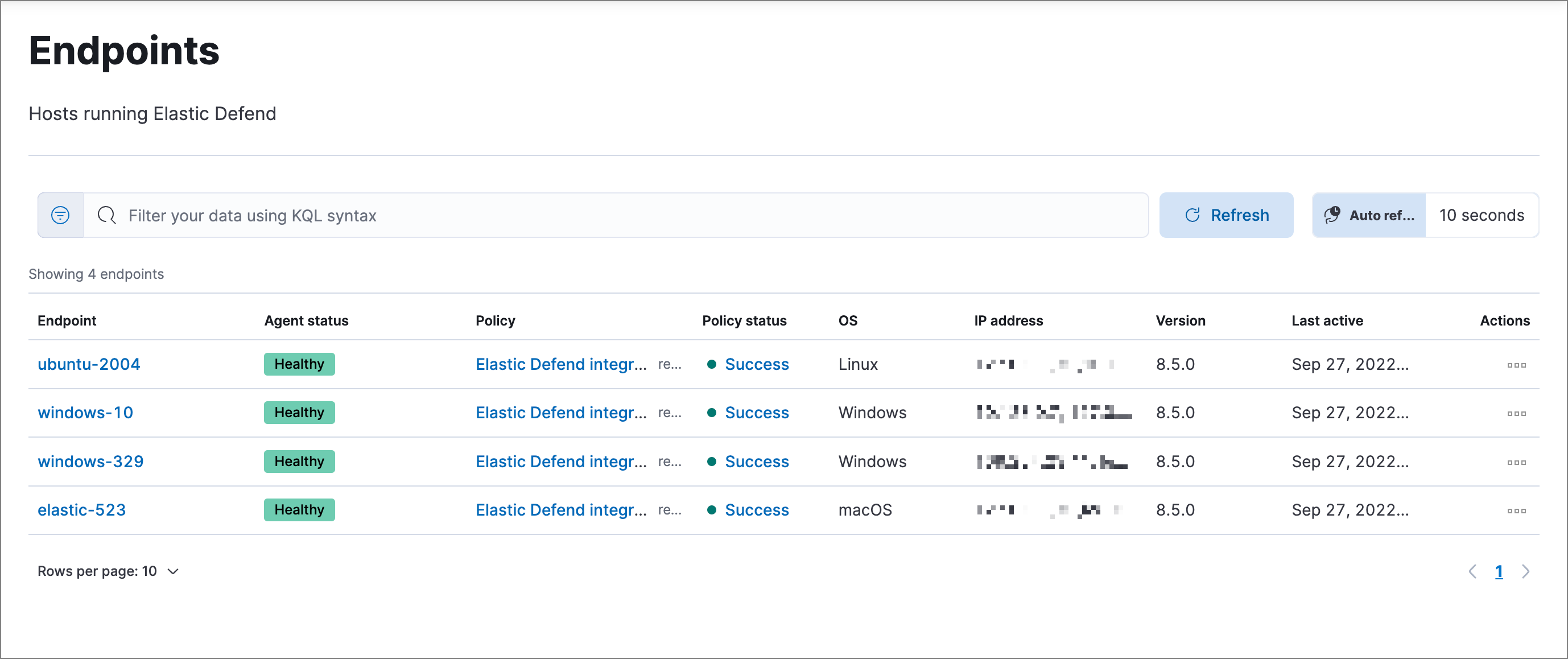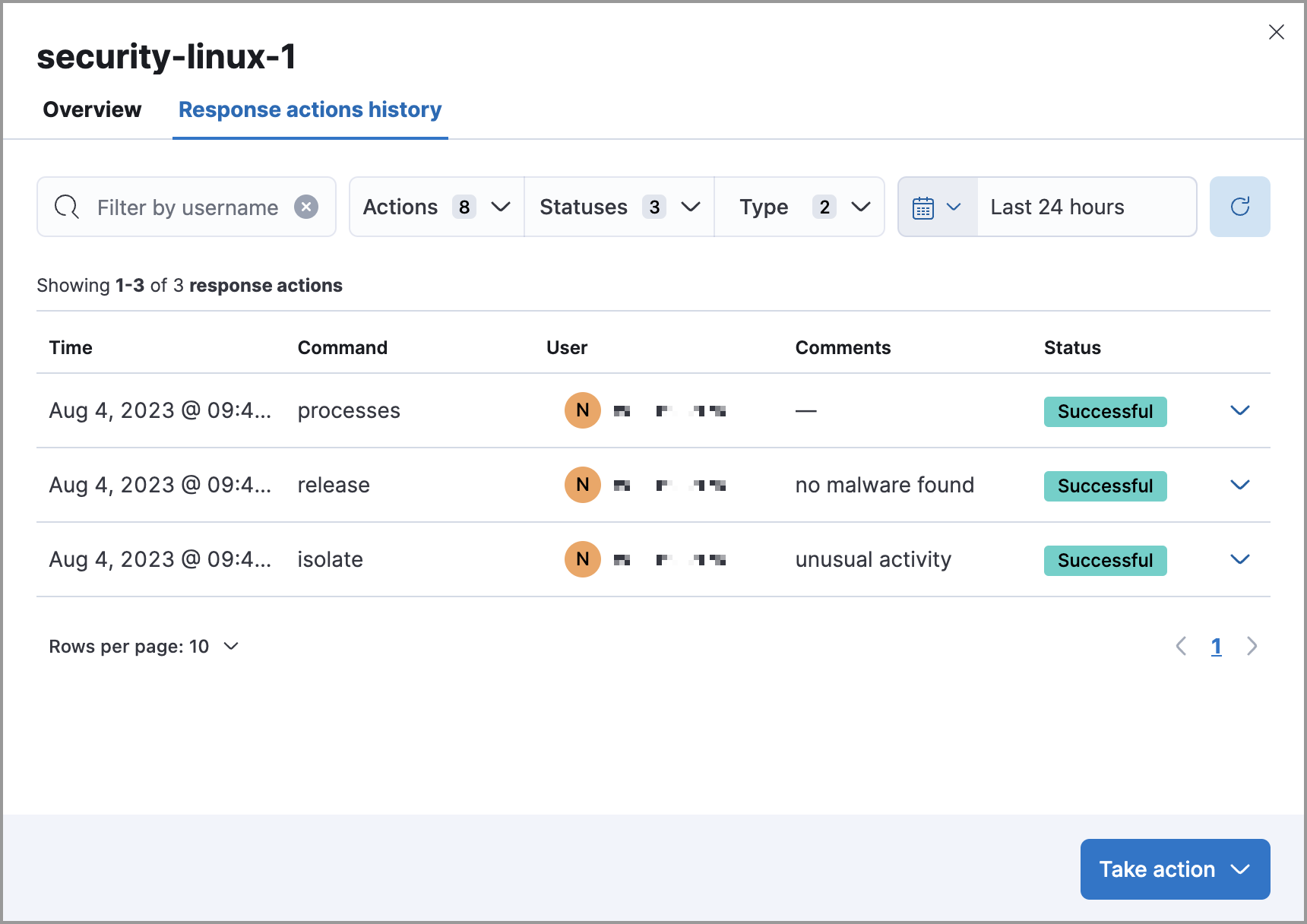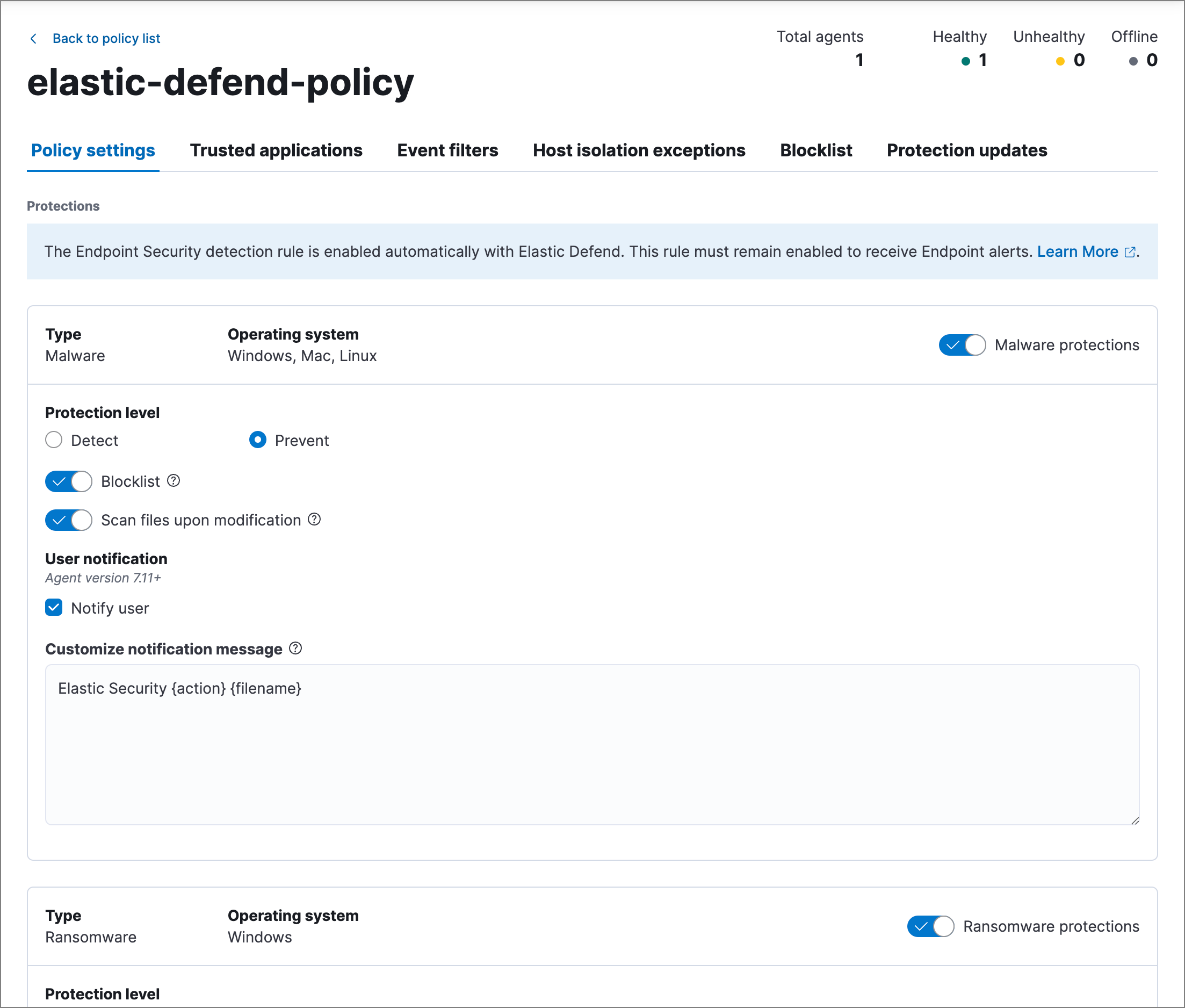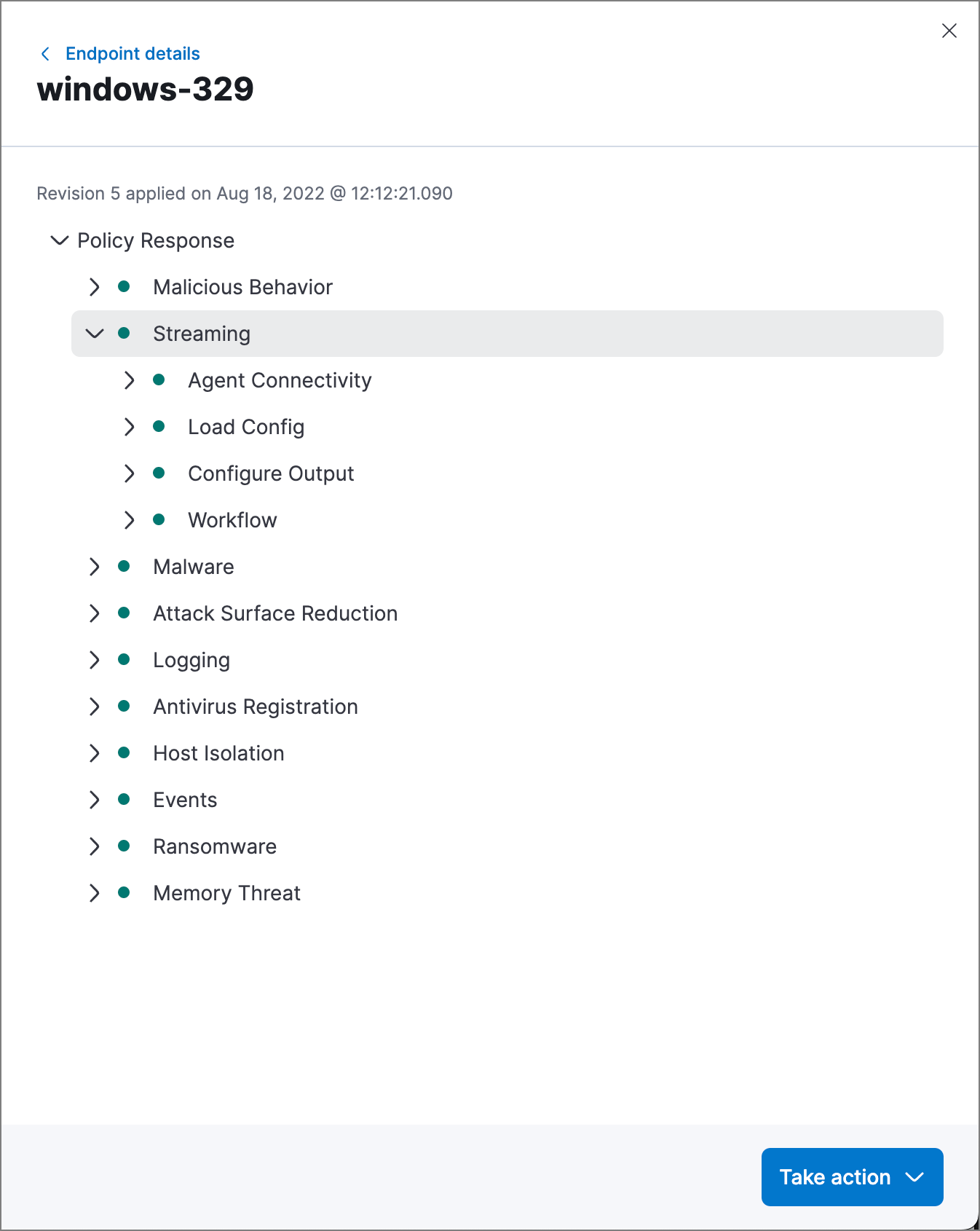Endpoints
The Endpoints page allows administrators to view and manage endpoints that are running the Elastic Defend integration.
- Fleet must be enabled in a Kibana space for administrative actions to function correctly.
- You must have the Endpoint List privilege or the appropriate user role to access this feature.
The Endpoints list displays all hosts running Elastic Defend and their relevant integration details. Endpoints appear in chronological order, with newly added endpoints at the top.

The Endpoints list provides the following data:
Endpoint: The system hostname. Click the link to display endpoint details in a flyout.
Agent Status: The current status of the Elastic Agent.
NoteNot all Elastic Agent statuses in Fleet correspond to the statuses in the Elastic Security app. For example, an
unenrolledElastic Agent in Fleet shows asofflinein the Elastic Security app.Policy: The name of the associated integration policy when the agent was installed. Click the link to display the integration policy details page.
Policy status: Indicates whether the integration policy was successfully applied. Click the link to view policy status response details in a flyout.
OS: The host’s operating system.
IP address: All IP addresses associated with the hostname.
Version: The Elastic Agent version currently running.
Last active: A date and timestamp of the last time the Elastic Agent was active.
Actions: Select the context menu (…) to do the following:
- Isolate host: Isolate the host from your network, blocking communication until the host is released.
- Respond: Open the response console to perform response actions directly on the host.
- View response actions history: View a history of response actions performed on the host.
- View host details: View host details on the Hosts page in the Elastic Security app.
- View agent policy: View the agent policy in Fleet.
- View agent details: View Elastic Agent details and activity logs in Fleet.
- Reassign agent policy: Change the agent policy assigned to the host in Fleet.
Click any link in the Endpoint column to display host details in a flyout. You can also use the Take Action menu button to perform the same actions as those listed in the Actions context menu, such as isolating the host, viewing host details, and viewing or reassigning the agent policy.

The endpoint details flyout also includes the Response actions history tab, which provides a log of the response actions performed on the endpoint, such as isolating a host or terminating a process. You can use the tools at the top to filter the information displayed in this view. Refer to Response actions history for more details.

To view the integration policy page, click the link in the Policy column. If you are viewing host details, you can also click the Policy link on the flyout.
On this page, you can view and configure endpoint protection and event collection settings. In the upper-right corner are Key Performance Indicators (KPIs) that provide current endpoint status. If you need to update the policy, make changes as appropriate, then click the Save button to apply the new changes.
Users must have permission to read/write to Fleet APIs to make changes to the configuration.

Users who have unique configuration and security requirements can select Show advanced settings to configure the policy to support advanced use cases. Hover over each setting to view its description.
Advanced settings are not recommended for most users.

The status of the integration policy appears in the Policy status column and displays one of the following:
Success: The policy was applied successfully.WarningorPartially Applied: The policy is pending application, or the policy was not applied in its entirety.NoteIn some cases, actions taken on the endpoint may fail during policy application, but these cases are not critical failures - meaning there may be a failure, but the endpoints are still protected. In this case, the policy status will display as "Partially Applied."
Failure: The policy did not apply correctly, and endpoints are not protected.Unknown: The user interface is waiting for the API response to return, or, in rare cases, the API returned an undefined error or value.
For more details on what’s causing a policy status, click the link in the Policy status column and review the details flyout. Expand each section and subsection to display individual responses from the agent.
If you need help troubleshooting a configuration failure, refer to Troubleshoot Elastic Defend and Common problems with Fleet and Elastic Agent.

To filter the Endpoints list, use the search bar to enter a query using Kibana Query Language (KQL). To refresh the search results, click Refresh.

The date and time picker on the right side of the page allows you to set a time interval to automatically refresh the Endpoints list — for example, to check if new endpoints were added or deleted.